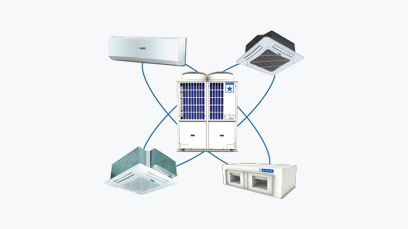VRF & VRV Systems

VRF (Variable Refrigerant Flow) and VRV (Variable Refrigerant Volume) are two similar types of HVAC systems that provide efficient heating and cooling for buildings. While there are technical differences between VRF and VRV, the terms are often used interchangeably and refer to the same concept.
VRF/VRV systems are characterized by their ability to vary the amount of refrigerant flowing to individual indoor units based on the specific cooling or heating demands of each zone or room. This allows for precise temperature control, energy efficiency, and flexibility in air conditioning.
Here are the key features and components of VRF/VRV systems
Outdoor Unit
The outdoor unit of a VRF/VRV system contains the compressor(s), condenser coil, and other components. The compressor modulates its speed to adjust the refrigerant flow rate, matching the cooling or heating requirements of the connected indoor units.
Refrigerant Circuit
VRF/VRV systems utilize refrigerant as the heat transfer medium. The refrigerant flows between the outdoor unit and multiple indoor units through refrigerant lines or pipes.
Indoor Units
Multiple indoor units, such as fan coil units or ducted units, are connected to the VRF/VRV system. Each indoor unit can have individual temperature controls and operates independently. The refrigerant flow to each indoor unit is modulated according to the specific cooling or heating needs of that zone.
Control System
VRF/VRV systems incorporate advanced control systems that monitor and manage the operation of the outdoor unit, indoor units, and refrigerant flow. These control systems ensure efficient operation, temperature control, and coordination between the various components.
